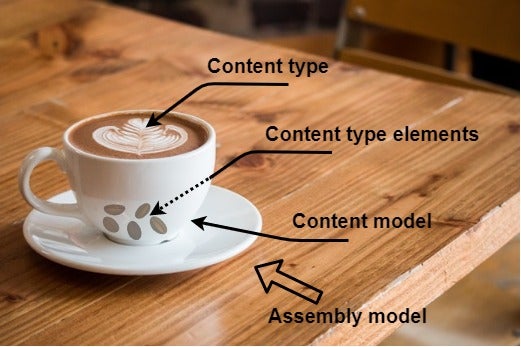| Content | Article | Coffee | Building | Information |
| Assembly model | Order of sections | Steps | Building blueprint | SQL |
| Content model | Structure of articles and how they relate to each other | Coffee cup | Building codes | Database |
| Content types | Blog, News, Breaking news | Flat white, Cappuccino, Cafe latte, Lungo, Cold brew | Bungalow, Duplex, Villa | Table |
| Content type elements | Images, Text, Video | Water, Beans, Milk, Creamer, Sugar | Mortar, Bricks, Water, Cement, Timber, Tiles | Column |
| Content chunks | SEO fields, Metadata fields, CTAs | Coffee pods, Creamer, Nescafe 3-in-1 | Pre-fab walls, Windows, Doors | Variable |

